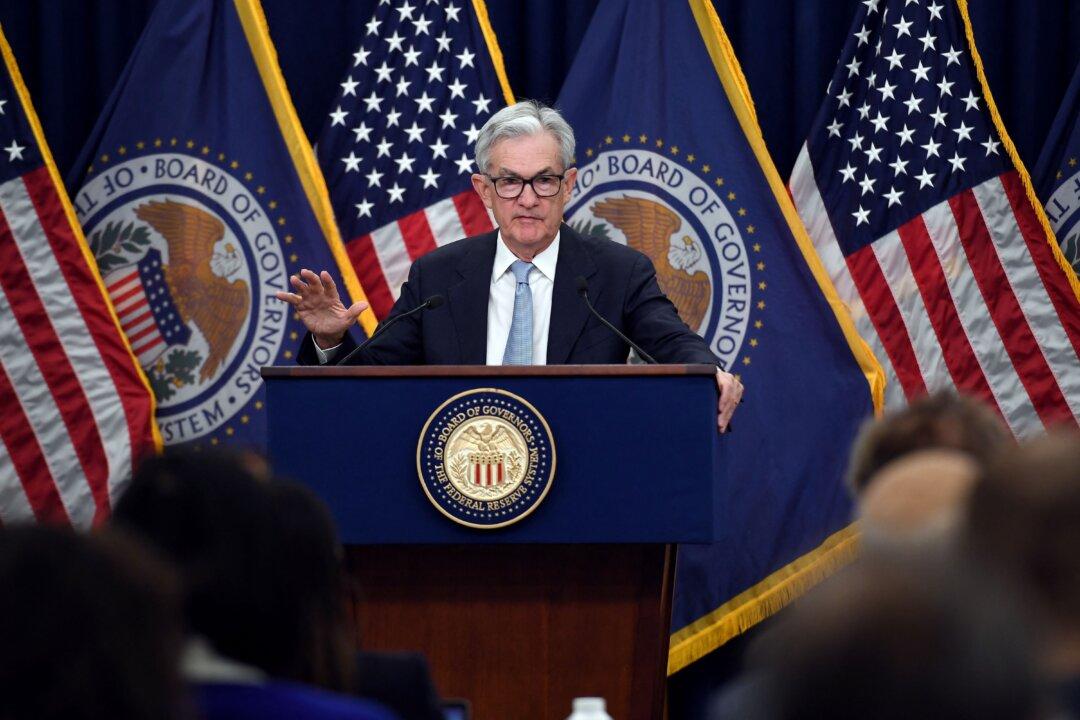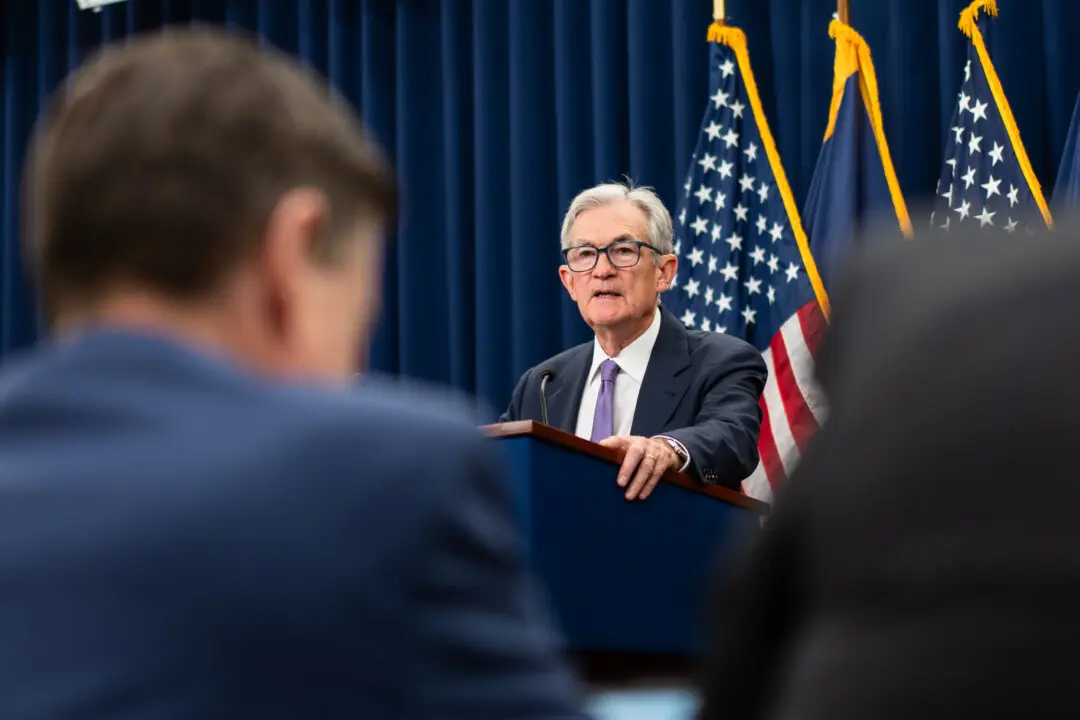The American people are losing confidence in Federal Reserve Chair Jerome Powell’s leadership as the U.S. economy grapples with crushing inflation and a slowing economic landscape, a new survey revealed.
According to new polling data from Gallup, 36 percent of U.S. adults say they have a “great deal” or a “fair amount” of confidence that Powell would do or recommend the right thing for the economy. This is down from 43 percent a year ago. Twenty-six percent reported “only a little,” and 28 percent responded with “almost none,” the firm’s annual Economy and Personal Finance poll showed.





